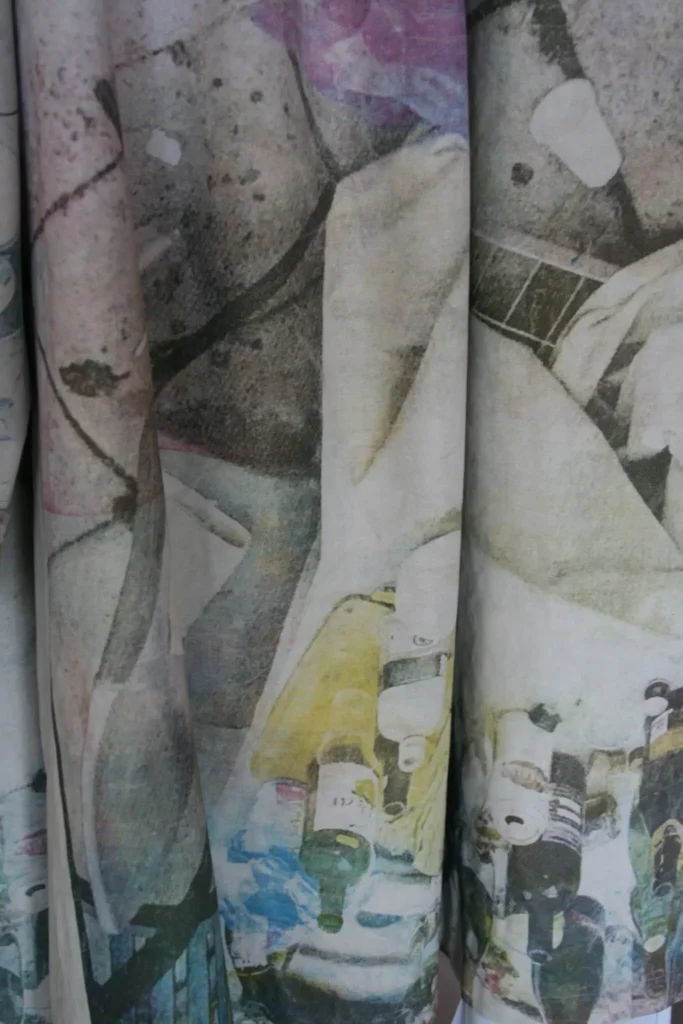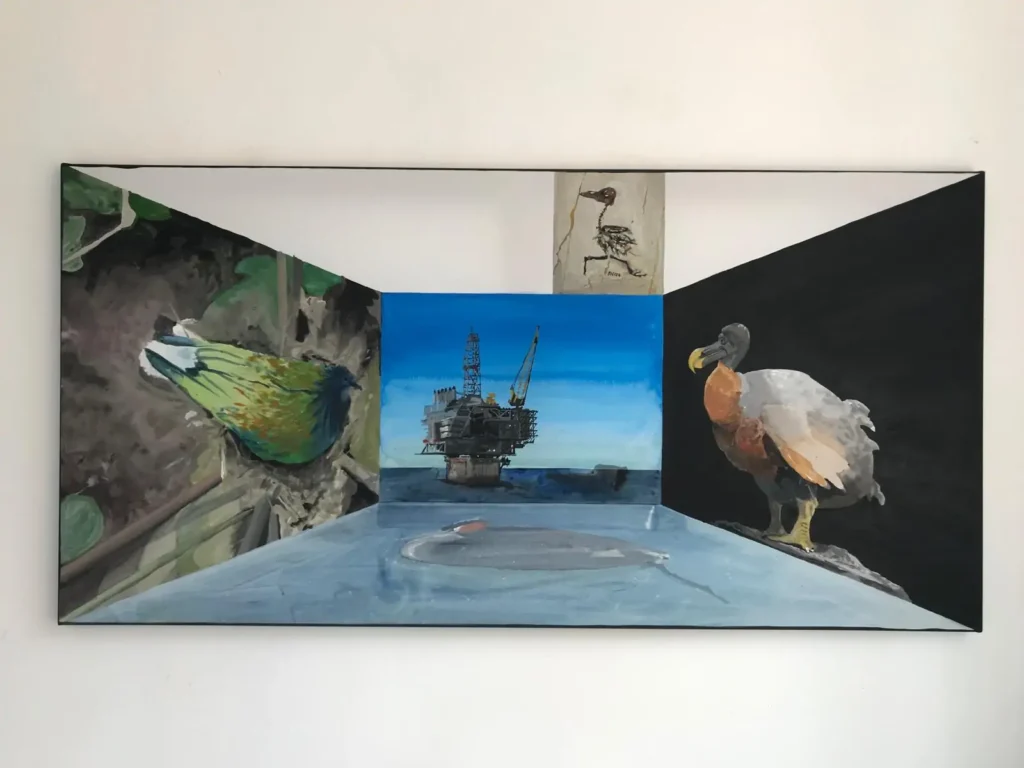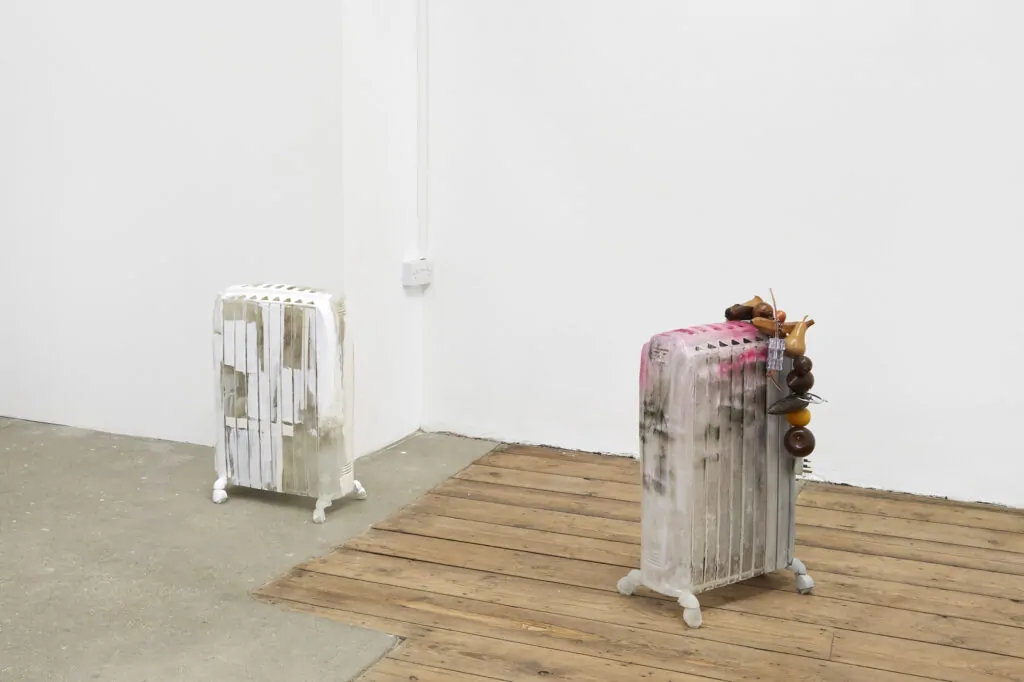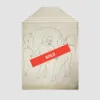Discover the journey of Isaac Simon, Founder and Director of South Parade, as he transitions from the insurance industry to the art world, establishing South Parade as a thriving gallery in London. It was the knock of the auction hammer that sparked his fascination with the arts as he watched auctioneers Christopher Burge, Jussi Pylkkänen, and Oliver Barker on YouTube. Simon was captivated by the electric blend of anticipation, competition, and drama as he observed the dynamics of wealth, culture, and desire playing out in the relentless pursuit of cultural assets.
However, Simon’s love for the arts was ingrained long before his auction binges on YouTube. As a child, his parents frequently took him to museums on weekends. In his twenties, after finishing university and spending several years as an insurance broker, his passion for the arts truly took hold. By day, he navigated the insurance world while setting aside his evenings and weekends for art. Eager to learn more, he attended auctions whenever he could, absorbing everything—from country house sales to contemporary art, rare curiosities, and Old Master paintings.
Eventually, Simon decided to close the curtain on the insurance world, driven by a desire to reconnect with his Mexican heritage. This led him to head up an artist residency in Mexico for a well-known London-based gallery. The experience reshaped his career and reignited his long-standing love affair with the arts, giving him a fresh perspective and a stronger sense of purpose for the direction he wanted to pursue in the art world. This newfound sense of purpose led Simon to establish South Parade in 2020 in South London’s Deptford, cultivating the gallery within a tight-knit community. The gallery’s dedicated following supported its move to its new Farringdon space along the Thameslink line.
When Simon is not in South Parade’s hot seat, he is in the lecture rooms of London’s Sotheby’s Institute, where he shares his experiences and knowledge as a guest lecturer, offering valuable insights on how to run and manage a gallery as well as his perspectives on the art world.
South Parade’s roster consists of diverse emerging talents, It includes artists like Athens based James Fuller, Tom Hardwick-Allan, Aidan Duffy, and Garrett Lockhart, among others. As the gallery continues to establish its reputation in the capital, it’s set to participate in Frieze London this October, where it will present the work of Georgina Hill—an exciting milestone that solidifies South Parade’s presence in London’s contemporary art scene.
As South Parade prepares for this milestone, we caught up with Simon to discuss the vision behind the gallery, his approach to curating, and what the future holds for its continued evolution.
There has to be authenticity within the practice and an unwavering commitment to their line of enquiry, regardless of any current trends or fashions
Isaac Simon
“A separate place between the thought and felt” is on until the 28th September, 2024 at South Parade
Hi Isaac, thanks for speaking with us. Can you share your path into the world of arts and what led you to launch South Parade?
Isaac Simon: If you asked me what I wanted to do when I was 18, it was an auctioneer – I used to watch YouTube videos of Christopher Burge, Jussi Pylkkänen and Oliver Barker!
My interest in art was instilled from an early age being taken to museums with my parents every Saturday. I only really became interested in contemporary art during my 20’s. Finishing university, I worked as an insurance broker for seven years, with evenings and weekends consumed with art. I went to as many auction viewings as I could, training my eye, so to speak. I had an appetite to see as much as possible – country house sales, scientific objects, contemporary art, old masters, coins, medieval manuscripts, it didn’t matter.
The turning point was my time living in Mexico City, upon finishing my time in financial services. Being half Mexican, I moved to Mexico to explore this side of my heritage more and also became very involved in directing an artist residency on behalf of a gallery in London whilst there. Very much like a fixer, I was there to welcome, advise, guide and help the artists with production. It was this proximity to the studio (and actually to artists in such an intimate environment) that I found incredibly rewarding. It was actually quite similar to my previous job as a broker, just a subject matter I seemed to really love. One of the artists whom I met at the residency, James Fuller, just had his second exhibition at the gallery. The natural progression from running a residency was opening an exhibition space.
South Parade supports emerging artists, especially those from outside London, and aims to help them establish themselves in the London art scene. Could we explore the gallery’s operations and goals in more detail?
Isaac Simon: The gallery is set up in the ‘representational’ model. Whilst there is much commentary on the efficacy and archaic nature of such a model, I think there is still value in this way of working operationally. I find the early and emerging scene in London, can be quite London centric, especially with a strong interest and emphasis on recent graduates.
What I really enjoy most is making discoveries, getting to know a practice and presenting it within a sensible context alongside a wider exhibition programme. I am interested in adding value to those that do not have the most visibility necessarily. Showing work should not be about who shouts the loudest, it has to be about quality.

Featured in South Parade’s group exhibition
“A separate place between the thought and felt”
How would you describe the overarching curatorial vision of South Parade? What themes or artistic movements are you particularly focused on exploring through your exhibitions?
Isaac Simon: Whilst this was not planned, it has turned into a gallery of ‘firsts’. More often than not with the artists either having their first solo exhibition in London or indeed ever. I have always been interested in process and with that in mind, the programme has an emphasis on materiality, and how an artwork is made and the ‘formal’ decision making that make up that process and how it relates to what they are saying conceptually.
Exploring how through the vehicles of both solo and group exhibitions, the audience can be asked to make connections. Exhibition making that is not didactic – and how each object can perhaps inform our understanding of the next. I want exhibitions at South Parade to be alive and to offer a context for works of art to catch viewers off guard, offer unexpected thoughts or insights.

Represented by South Parade
Can you walk us through the process of selecting artists to feature at South Parade? What qualities or aspects of an artist’s work make them a good fit for the gallery?
Isaac Simon: I work with artists in Wakefield, Leicestershire, Athens and of course London – There has to be authenticity within the practice and an unwavering commitment to their line of enquiry, regardless of any current trends or fashions. An ambition to push the work into new areas. I am interested in work that does not give itself up too quickly. Work that does not tell me what to think, how to feel, exactly what I am looking at, how it was made. Work that leaves room for me as a viewer to approach, meet, add to.
The emphasis for me is face to face viewing at the gallery or elsewhere, if possible. Ultimately, when I am in front of a work, I ask myself “am I affected by this work?”. I think naturally perhaps, much of the work I show, I could live with at home. Depending on the time of day, or my mood, the work will offer something different every time I see it. It is like owning many artworks at once.
How does South Parade support its artists beyond exhibitions? Are there particular programs, residencies, or collaborations you facilitate to aid their development?
Isaac Simon: Ways of working is something that I think about constantly. For example, the most recent collaboration with CYLINDER came about from ongoing conversations and interest in each other’s programmes. They are a gallery from Seoul, South Korea that opened at a similar time to South Parade and we wanted to do something more durational than that of a shared art fair booth for example, which is over very quickly in four days. We wanted to draw upon our collective audiences and networks. That said, I have also shared booths at art fairs which have been very successful too.

Featured in South Parade’s group exhibition
“A separate place between the thought and felt”
What are your thoughts on the current state of London’s art scene? What trends or shifts have you observed in recent years that excite or concern you?
Isaac Simon: It is incredibly vibrant, there are lots of galleries opening up, whether it be after the pandemic (like South Parade’s opening) or in the last year or so. It excites me that despite all the shortcomings concerning Brexit, that my gallery peers are importing from Europe and beyond and not allowing wider political or economic trends, dictate the work and activities they want to exhibit and believe in.
The economic climate as it stands is of course very difficult and as a result we’ve seen quite a few recent closures. Whilst a challenging time, opportunities do present themselves. Last October, the gallery moved from Deptford to Farringdon. To a much larger unit, one more architecturally exciting The building has an interesting history; initially a brewery in the late 19th Century, In the 1950’s it housed Italian migrant families (one of whom I met by chance one evening) and by jewellers (being just above Hatton Garden in the 1980’s and 1990’s).
In what ways do you see South Parade contributing to the vibrancy and diversity of London’s art scene? How do you differentiate the gallery in such a dynamic environment?
Isaac Simon: This is very difficult to answer. As a gallery of course, I cannot be all things to all people, I accept that my curatorial areas of focus may not be of interest to everyone. I am interested in what a gallery can be, not only as a commercial entity whereby paintings are hung on a white wall and sold, but ways of community building. ‘In conversations’, readings, artist tours, publication launches, listening events are all ways to bring new people into the realm of the gallery.
The recent event with Casual Encountersz (with readings by Andrew Durbin, Leo Robson, Ashani Lewis, Momtaza Mehri, Maddie Mortimer & John-Baptiste Oduor). South Parade will also be hosting a new reading series called ‘new work’ featuring Eliza Clark (Boy Parts, Pennance), Gabriel Smith (Brat), and Toye Oladinni on 16th August. The gallery is lucky to have an open air courtyard, something that feels more European, than it does British. It is good for hosting such events. The distinctions between different kinds of creative formats is a little bit more fluid now than they may have been in the past.

Featured in South Parade’s group exhibition
“A separate place between the thought and felt”
South Parade is participating in this year’s upcoming Focus at Frieze London. Can you share the significance of this feature for the gallery? What impact will being part of Frieze London have on the gallery in terms of visibility, artist opportunities, and audience engagement?
Isaac Simon: I am very excited to be participating for the first time at the fair with an ambitious solo presentation by Georgina Hill, that builds and develops on her solo exhibition at the gallery earlier this year. Her work thinks about the values and hierarchies that we assign to the material world around us and spans moving image, text and sculpture – from stained glass figures to motorised domestic objects – challenging the mediums’ use and form. It feels like an important milestone in the life of the gallery.

Looking ahead, what are some of the future directions or projects that you are most excited about for South Parade? Are there any upcoming exhibitions or collaborations that you can share with us?
Isaac Simon: With regards to the programme, there is a 12 artist group exhibition opening 10 August that uses a poem by Thom Gunn as a departure point to think about space and place. We’ll be showing works by Abraham Cruzvillegas, Gillian Lowndes and Dorothy Mead alongside contemporary artists. Further ahead, Wakefield based painter Zoë Carlon will have her second exhibition at the gallery over Frieze.
Her paintings on aluminium spanning unoccupied interiors, views through windows and peripheries of the maintained natural world, really speak towards our capacity for active attention, and experience of solitude. To see out the year, Hong Kong born, London based painter Kin—Ting Li, will have his second exhibition at the gallery in November.
©2024 South Parade





